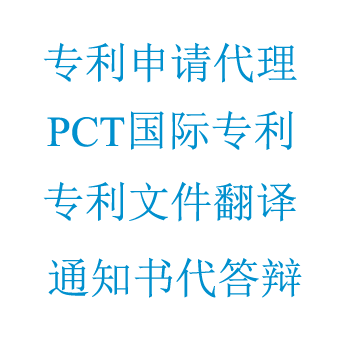对于这段套话,有的专利申请中有,有的没有。先不管这段套话在专利申请文件是否有必要,是否有用,那这种“套话”对应的英文是什么?
对于这个问题,我也思索了很久,也问过别人,可能是我表达得不准确,一直没有得到满意的答案。开始以为套话的英文称为 statemements at the end of the specification or description; legalese,template等。但这些英文词汇都无法令我满意。
在后来的实务中,偶然看到关于这种套话的说明(英文),原来这种套话有一个专门的术语。
在专利申请中,这种套话对应的英文是:boilerplate 、boilerplate sentences或 boilerplate language !
Boilerplate, also known as standard, miscellaneous, or general clauses, is located at the end of most corporate legal documents. They provide instructions on how to act in a variety of situations and clarify the relationship between the parties.
Boilerplate的定义
A description of uniform language used normally in legal documents that has a definite, unvarying meaning in the same context that denotes that the words have not been individually fashioned to address the legal issue presented.
更具体地定义是:
slang for provisions in a contract, form or legal pleading which are apparently routine and often preprinted. The term comes from an old method of printing. Today "boilerplate" is commonly stored in computer memory to be retrieved and copied when needed. A layperson should beware that the party supplying the boilerplate form usually has developed supposedly "standard" terms (some of which may not apply to every situation) to favor and/or protect the provider.
boilerplate相似的是broadening statements.二者的区别在于:
专利申请结尾处的套话(boilerplate)类似于这样的:
“While the invention has been particularly shown and described with respect to the illustrated and preferred embodiments thereof, it will be understood by those skilled in the art that the foregoing and other changes in form and details may be made therein without departing from the spirit and scope of the invention.”
几种常见的英文套话
- Although specific advantages have been enumerated above, various embodiments may include some, none, or all of the enumerated advantages.
- [O]ther technical advantages may become readily apparent to one of ordinary skill in the art after review of the following figures and description.
- It should be understood at the outset that, although exemplary embodiments are illustrated in the figures and described below, the principles of the present disclosure may be implemented using any number of techniques, whether currently known or not. The present disclosure should in no way be limited to the exemplary implementations and techniques illustrated in the drawings and described below.
- Unless otherwise specifically noted, articles depicted in the drawings are not necessarily drawn to scale.
- Modifications, additions, or omissions may be made to the systems, apparatuses, and methods described herein without departing from the scope of the disclosure. For example, the components of the systems and apparatuses may be integrated or separated. Moreover, the operations of the systems and apparatuses disclosed herein may be performed by more, fewer, or other components and the methods described may include more, fewer, or other steps. Additionally, steps may be performed in any suitable order. As used in this document, “each” refers to each member of a set or each member of a subset of a set.
- To aid the Patent Office and any readers of any patent issued on this application in interpreting the claims appended hereto, applicants wish to note that they do not intend any of the appended claims or claim elements to invoke 35 U.S.C. 112(f) unless the words “means for” or “step for” are explicitly used in the particular claim.
终于找到满意的答案了。
扩展阅读:
Can boilerplate language describing possible variations to an invention ever impact validity of a patent? Many software patents include standard “boilerplate” text describing many ways to implement an invention, such as by discussing execution of the software on a smart phone, laptop, mainframe, PDA, audio player, or even a refrigerator! Often, such boilerplate language is added to patent applications with consideration of broadening the potential scope of the recited terms or providing additional support for recited claim terms.
However, in Nextpoint v. Hewlett-Packard, an Illinois district court used such “broadening” boilerplate language against the patent holder, Nextpoint, in supporting its holding that the claims of issued Patent 8,447,731 (the ‘731 Patent’) are directed to an abstract idea and thus not eligible for patent protection under §101. While the use of boilerplate was not, by itself, dispositive, the Judge indicated that this expansive language weighed against Nextpoint’s arguments that the ‘731 Patent describes “a specific technical solution.”
Citing the leading case on §101, the Supreme Court’s Alice v. CLS Bank Int’l decision, the district court judge determined that the claims of the ‘731 Patent were directed to an abstract concept – specifically being “directed to the receipt, storage, and processing of electronically stored information (‘ESI’) in a broadly defined computing environment.” Nextpoint did not dispute that receipt, storage, and processing is an abstract concept; rather they argued that the claims were instead drawn to “a specific technological solution” to a "specific problem in ESI processing," and therefore not an abstract idea under step 1 of the test outlined in Alice for determining patent eligibility.
Taking a skeptical view that the ‘731 Patent describes “a specific manner of processing” ESI, the Judge looked into the specification and noted that “the specification emphasizes that a multiplicity of alternatives for practicing the invention using a wide range of hardware and software technologies exist.” Citing specific passages of the specification that describe a great deal of usable hardware and software processing schemes, the Judge stated that “[i]t is difficult to reconcile [such] passages … with plaintiff’s argument that the ‘731 Patent claims a ‘specific technical solution.’” Thus, “the fact that the specification describes a wide variety of alternative configurations supports the conclusion that the patent could preempt every application of the basic idea of using a cloud computing environment to process … ESI,”
Ultimately, even though the ‘731 Patent discusses numerous specific examples in the specification, the generalized discussion of alternatives in the specification and the Judge’s determination that the ‘731 Patent is directed to “the use of conventional or generic technology in a nascent but well-known environment,” led to a holding that the claims are directed to an abstract idea. In finding that the ‘731 Patent does not transform the abstract idea into a patent‑eligible application under step 2 of Alice, the Judge dismissed the case.
扩展阅读二、
Boilerplate Language in Patents
The specification of U.S. Patent No. 10,000,000 is short – only about three pages long. However, the patentee made room for the following boilerplate:
- Although specific advantages have been enumerated above, various embodiments may include some, none, or all of the enumerated advantages.
- [O]ther technical advantages may become readily apparent to one of ordinary skill in the art after review of the following figures and description.
- It should be understood at the outset that, although exemplary embodiments are illustrated in the figures and described below, the principles of the present disclosure may be implemented using any number of techniques, whether currently known or not. The present disclosure should in no way be limited to the exemplary implementations and techniques illustrated in the drawings and described below.
- Unless otherwise specifically noted, articles depicted in the drawings are not necessarily drawn to scale.
- Modifications, additions, or omissions may be made to the systems, apparatuses, and methods described herein without departing from the scope of the disclosure. For example, the components of the systems and apparatuses may be integrated or separated. Moreover, the operations of the systems and apparatuses disclosed herein may be performed by more, fewer, or other components and the methods described may include more, fewer, or other steps. Additionally, steps may be performed in any suitable order. As used in this document, “each” refers to each member of a set or each member of a subset of a set.
- To aid the Patent Office and any readers of any patent issued on this application in interpreting the claims appended hereto, applicants wish to note that they do not intend any of the appended claims or claim elements to invoke 35 U.S.C. 112(f) unless the words “means for” or “step for” are explicitly used in the particular claim.
This word “boilerplate”. I see it all the time, in relation to patent specifications written in the USA. But I never see it used in relation to those drafted elsewhere.
So, is such text an artefact of the US legal system? What purpose does it serve (other than to impress impressionable readers).
Is it so, that diligent US attorneys find creative ways to include ever more boilerplate, to signal to their clients that they are better drafters than all the others?
If so, would you say that the strategy succeeds. Dennis seems to think so.
套话是什么?Google Omits Needless Words (Boilerplate)
相关文章:
专利申请的套话有用吗?
专利申请套话大全
专利申请套话英文翻译大全
版权保护: 本文由 首页 原创,转载请保留链接: http://www.ipwiki.cn/patent/translation/147.html







